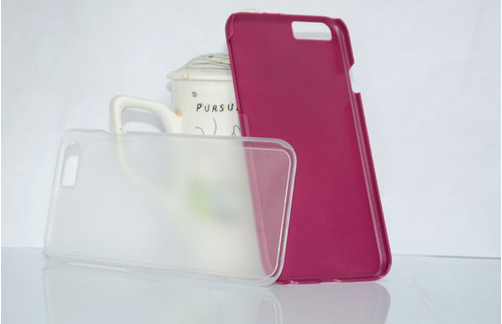PC phone case PC plastic is commonly known as polycarbonate, which is commonly known as bulletproof rubber due to its excellent mechanical properties. PC plastic has the characteristics of high mechanical strength, wide temperature range, good electrical insulation performance (but the arc resistance is unchanged), dimensional stability and transparency. It is widely used in electrical products, electric instrument housings, and electronic product structural parts. There are many modified products of PC, usually adding glass fiber, mineral filler, chemical flame retardant, other plastics, and the like. PC plastics have poor fluidity and high processing temperatures, so the processing of many grades of modified materials requires specialized plastic injection structures. PC plastic is commonly known as polycarbonate, which is commonly known as bulletproof rubber due to its excellent mechanical properties. PC plastic has the characteristics of high mechanical strength, wide temperature range, good electrical insulation performance (but the arc resistance is unchanged), dimensional stability and transparency. It is widely used in electrical products, electric instrument housings, and electronic product structural parts. There are many modified products of PC, usually adding glass fiber, mineral filler, chemical flame retardant, other plastics, and the like. PC plastics have poor fluidity and high processing temperatures, so the processing of many grades of modified materials requires specialized plastic injection structures. 1, plastic processing PC has a large water absorption rate, and must be preheated and dried before processing. The pure PC is dried at 120 ° C, and the modified PC is generally dried at 110 ° C for more than 4 hours. Drying time should not exceed 10 hours. It is generally possible to judge whether the drying is sufficient by the air-to-air extrusion method. Recycled materials can be used up to 20%. In some cases, recycled materials can be used 100%, depending on the quality requirements of the product. Recycled materials cannot mix different masterbatches at the same time, otherwise the properties of the finished product will be seriously damaged. 2, the selection of injection molding machine Due to cost and other reasons, current PC products use modified materials, especially electrical products, and must also increase fire resistance. When molding flame-retardant PCs and other plastic alloy products, the requirements for plasticizing systems for injection molding machines are Good mixing and corrosion resistance. Conventional plasticizing screws are difficult to do. When purchasing, be sure to explain in advance. Ramada has a dedicated PC screw for customers to choose from. 3, mold and gate design Common mold temperature is 80-100 ° C, plus glass fiber is 100-130 ° C, small products can use needle gate, the gate depth should be 70% of the thickest part, other gates have ring and rectangle. The larger the gate, the better, to reduce defects caused by excessive shearing of the plastic. The depth of the vent hole should be less than 0.03-0.06mm, and the flow path should be as short and round as possible. The draft angle is generally about 30'-1. 4, the temperature of the melt The air injection method can be used to determine the processing temperature. Typical PC processing temperatures are 270-320 ° C, and some modified or low molecular weight PCs are 230-270 ° C. 5, injection speed It is more common to form with a faster injection speed, such as electrical switch parts. Commonly slow → rapid prototyping. 6, back pressure The back pressure of about 10 bar can be appropriately reduced without air grain and color mixing. 7, staying time If the residence time is too long at high temperature, the material will degrade, and it will also be CO2 and turn yellow. Do not use LDPE, POM, ABS or PA to clean the barrel. Apply PS cleanup. 8, matters needing attention Some modified PCs are prone to produce dark brown liquid bubbles due to too many times of recovery (reduced molecular weight) or uneven mixing of various components.
Cold Drawn Steel Bar is produced by hot rolled steel bar or wire rod to get smooth surface, more precision size, higher mechanical properties, which improves machining characteristics. It can also get various sections and sizes. So cold drawn steel bar is a better choice for machining users.
According to different steel grade, the production line is usually different. The Basic production line is as below:
For high carbon steel or alloy steel bars, to avoid the cracks in inner or surface, the bars are usually required to be annealed before cold drawing.
To get different mechanical properties or hardness depending on final usage, the cold drawn bars will also be heat treated such as annealed, normalized or quenched and tempered(Q&T).
For CNC machines usage, to get much more precision sizes or much more better surface roughness for chrome plating, the cold drawn steel bars can also be centerless ground or polished.
We have more advantages on producing cold drawn steel bars:
1) Big stocks of hot rolled round bars or wire rods as raw materials
2) Wide range of cold drawn steel bar sizes: from 10mm to 150mm
3) Different cold drawing medias powder or oil to get different surface
4) Straightening machines to get better straightness up to 0.5mm/m
5) Grinding and polishing machines to get better roughness upto 0.4um
6) Heat treating furnaces to adjust the mechanical properties
7) Full sets of testing equipment to test the sizes, mechanical properties and microstructure.
8) Multiple packages to avoid broken packages and anti-rusty
Cold Drawn Steel Bar Cold Drawn Bar,Round Steel Bar,Cold Drawn Steel Bar,Aisi 1018 Steel Square Bar SHANDONG LE REN SPECIAL STEEL CO., LTD. , https://www.lerenspecialsteel.com

Seven process points of the PC injection molding process
/*kangxianyue 250*250 was created on 2017/3/29*/ var cpro_id = "u2939694";